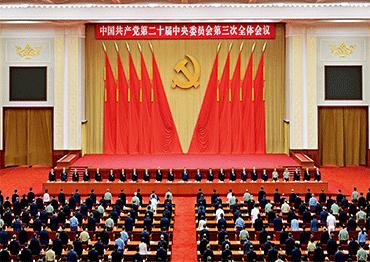To achieve new quality productive forces, the Resolution pledges to build a high-standard socialist market economy. “A high-standard socialist market economy provides an important guarantee for Chinese modernization,” it says.
According to the Resolution, a high-standard socialist market economy refers to a fairer and more dynamic market environment with resources being allocated as efficiently and productively as possible.
At the third plenary session of the 18th CPC Central Committee in 2013, the CPC emphasized that the core of economic reform is to manage the relationship between the market and the government. The “fairer and more dynamic market environment” proposed in the Resolution, according to Yan, is clearer and more specific than the commitment to make the market fully play its role.
Yan stressed that market-orientation differs from capital orientation. The former means fair transactions while the latter highlights value increase, which is why a fairer environment is so important, Yan said.
“For example, the government has failed to play a good role in areas like healthcare, education and public housing, which has exposed those areas to excessive market forces. Meanwhile, in other areas that require more market-oriented operations, the market did not play a decisive role [as the government has pledged],” Zheng Yongnian, director of the School of Public Policy, the Chinese University of Hong Kong-Shenzhen, told NewsChina.
That is why Zheng paid special attention to remarks in the Resolution that the CPC needs to “lift restrictions on the market while ensuring effective regulation and strive to better maintain order in the market and remedy market failures.”
“By doing so, we will ensure smooth flows in the national economy and unleash the internal driving forces and creativity of the whole of society,” the Resolution said.
While continuing to deepen reform of State-owned enterprises (SOEs), the Resolution demands further promotion of the development of non-public sectors by “formulating a private sector promotion law” and “removing barriers to market access.”
This will ensure that “the competitive areas of infrastructure are open to market entities in a fair manner” and “improving the long-term mechanism by which private enterprises participate in major national projects,” the Resolution reads.
Other measures include refining financing support policies and systems for private enterprises, improving the legal framework for the long-term regulation of charges levied on enterprises, and for clearing overdue payments owed to private enterprises.
The latest data from China’s National Development and Reform Commission shows that the number of private entities in China exceeded 180 million by June 2024, accounting for 96.4 percent of the country’s total market entities.

 Old Version
Old Version

